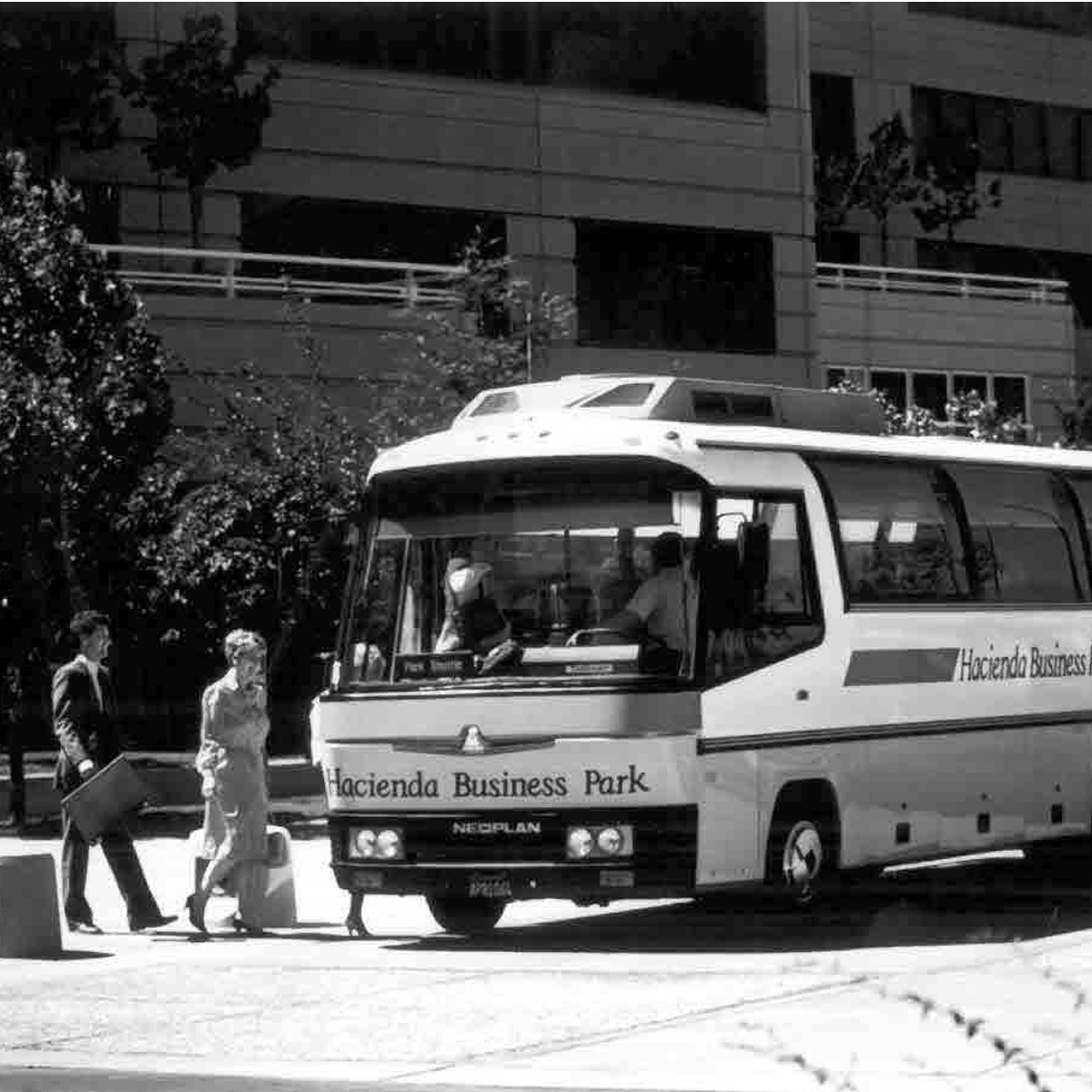City Receives Daily Calls
City Receives Daily Calls

While other communities are searching for answers to their traffic woes, Pleasanton receives daily inquiries from city managers across the nation regarding its successful Transportation Systems Management (TSM) program.
Implemented in November, 1984, the Pleasanton TSM Ordinance is the nation's toughest, calling for a reduction in peak-hour commute trips by 45 percent over a four-year period. Now, one year after the adoption of the ordinance, Pleasanton has attained a 33.7 percent reduction in peak-hour traffic, well beyond the first-year goal of 15 percent.
"We're very encouraged with the positive results and the spirit of cooperation from businesses and their employees," says Gail Gilpin, transportation coordinator for the City of Pleasanton.
Statistics on commuting habits and compliance with the Pleasanton TSM Ordinance were gathered from a comprehensive citywide survey completed by 10,121 employees, representing approximately three-fourths of the entire Pleasanton workforce.
"The surveys provide the city with a staggering amount of information on how employees get to work," Gilpin says. "Pleasanton probably knows more about its commuters than any other community in the country." Gilpin characterized corporate compliance with the TSM Ordinance as "enthusiastic," with 27 of Pleasanton's largest companies exceeding the 15 percent, first-year reduction goal.
Corporations actively involved with the city's TSM program include AT&T, Clorox, The Prudential Insurance Company of America, Pacific Bell, Viacom, Kaiser Corp., Farmers Insurance and Dillingham Construction.
Also enthusiastic about the Pleasanton TSM Ordinance is the Metropolitan Transportation Commission, the regional transportation planning agency for the greater San Francisco Bay Area. The commission recently presented a special "Award of Merit" to the City of Pleasanton for its innovation in transportation solutions.
"Unlike communities that wait for traffic congestion to become a problem, Pleasanton tackled the issue early," says Shana O'Hare, commute alternatives manager for the commission. "We suggest that any community looking into a TSM program review the Pleasanton model and adapt it to their particular conditions and needs."
A unique aspect of the Pleasanton TSM Ordinance is the cooperation from public, as well as private parties, in ensuring the success of the program.
The ordinance was drafted with the help of local business leaders, developers, residents and city staff. A volunteer task force, which includes representatives from companies with 100 or more employees, is responsible for implementing, maintaining and enforcing compliance with the TSM program.
Although the vast majority of companies in Pleasanton seem to realize the importance and benefits of the TSM Ordinance and are willing to comply, there are measures which can be used to "encourage" participation. Companies that fail to comply, will face fines and possible misdemeanor charges.
"It's the peer pressure that really makes TSM work," claims Gilpin. "No company wants to see its name in the newspaper as the bad guy, the one that didn't pull its weight in the program.
"Only one company was fined $85 during the first year of TSM and that company is now in full compliance," she adds.
While many companies are making great strides in cooperating with the ordinance, no entity has equaled the resolve and commitment of Hacienda Business Park.
With a full-time transportation manager and support staff, a four-bus shuttle fleet, bicycle lanes, preferential parking for car- and vanpool users and the non-stop promotion of TSM policies, Hacienda has reduced peak-hour commute trips to and from the business park by 43.5 percent. After a one-year period, the Hacienda figure almost matches the city's four-year goal.
Regarded as one of the nation's largest privately-owned, master-planned business parks, Hacienda requires its tenants to meet the city's TSM guidelines.
"Between our shuttle bus system and ridesharing programs, we're effectively eliminating 700 cars a day from the streets of Pleasanton," says Karen Fraser-Middleton, Hacienda's transportation manager.
Currently, the Hacienda-funded shuttle serves more than 200 employees daily between the business park and the San Leandro BART Station during peak-hour commuter traffic. During the noon hour, Hacienda shuttle buses operate between the business park and local shopping centers. There are an estimated 1,200 Hacienda employees who use car- or vanpool transportation.
Pleasanton's Gilpin, Hacienda's Fraser-Middleton and members of the TSM task force aren't resting on the first-year success of the ordinance. They will continue to promote the benefits of alternative transportation modes and educate the more than 2,000 new employees who will work in Pleasanton.
"Although we're more than satisfied with the results of the program's first year, we think we can do an even better job in the second year," says Gilpin. "For most companies, the first year of the program was used to establish a network and to help employees become familiar with the TSM concept.
"Now that TSM has been so widely accepted, I think companies can begin to implement more ambitious plans for further reducing peak-hour traffic."
To see a reproduction of the original article and edition of Pleasanton Pathways, visit: December 9, 1985 Pathways.




